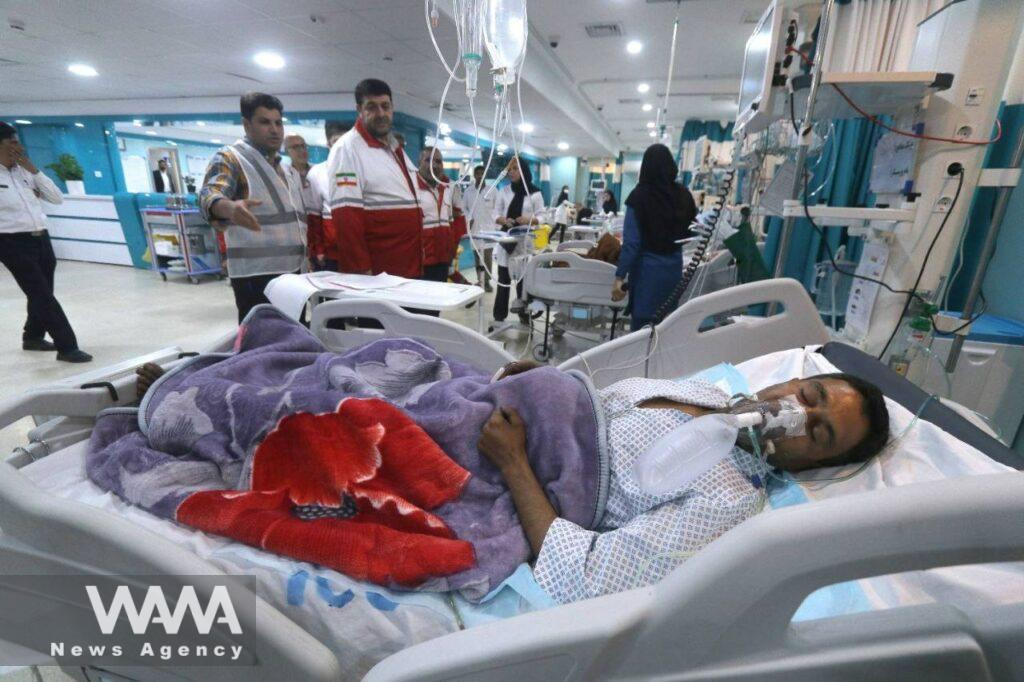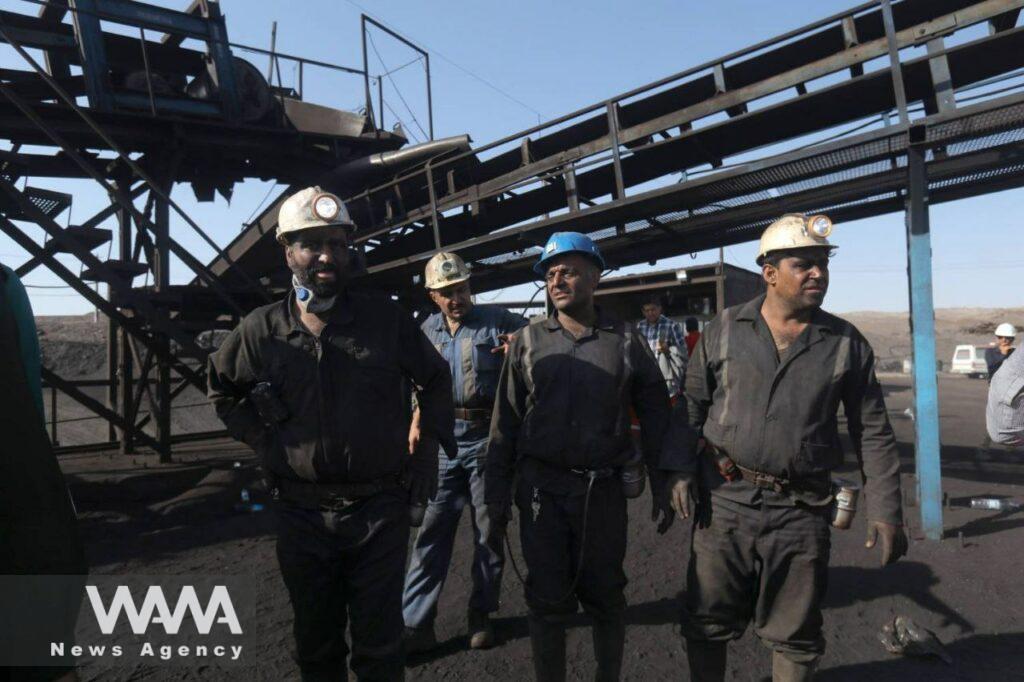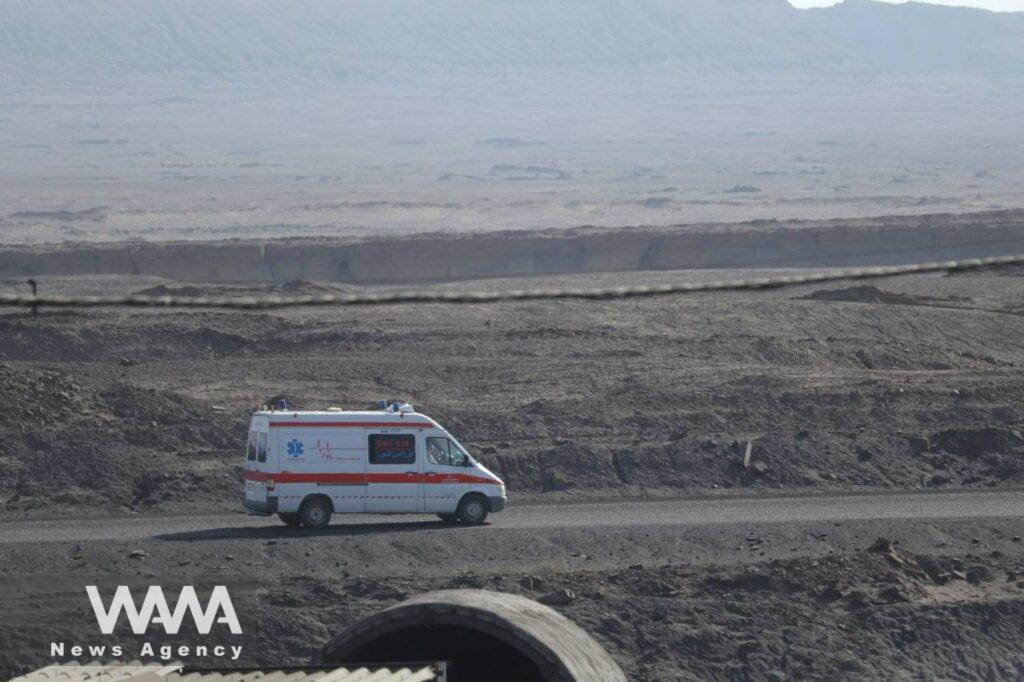Spirit of Death in Iranian Mines
WANA (SEP 23) – A tragic coal mine accident has claimed several lives in Iran, this time in the Tabas coal mine. The loss of these miners has reignited public scrutiny over the country’s safety standards in one of its most dangerous industries. While the nation mourns, the incident serves as a reminder of an important issue: inadequate safety protocols in Iran’s mining sector, where such disasters are, unfortunately, far too common.
The mine, located in Tabas city in South Khorasan Province of Iran, suffered a collapse at 9 P.m. on September 21st, killing 38 miners and trapping several more; rescue efforts are still ongoing to save the 14 people who have been trapped since Saturday night.
Early reports suggest the cause was a methane gas explosion in Block B & C of the Madanjoo Company.
The methane gas explosion occurred in block C of this mine. Still, since these mines are about 2 kilometres away and the workshops were connected to each other to supply power and facilities, the gas also reached block B of the mine.
The explosion did not result in a fire or severe wall collapse, but the accumulation of methane gas in the tunnels caused the workers to suffocate in the coal mine,
As investigations continue, some believe this unfortunate event could have been avoided if appropriate safety protocols had been implemented.
This incident reminds people of the 2017 Zemestan-Yurt coal mine explosion in Golestan Province, where 43 miners lost their lives due to a methane gas buildup. Despite promises of reforms following that disaster, progress on improving safety conditions has been slow, leaving workers vulnerable to the same kinds of risks.

One of the injured is treated in hospital following a gas explosion in a coal mine in South Khorasan Province, Iran, September 22, 2024. Mohsen Noferesti/IRNA/WANA (West Asia News Agency)
A Legacy of Poor Safety Standards
The recurring nature of these disasters points to a systemic issue within Iran’s mining industry. Many mines continue to operate with ageing infrastructure, and despite Iran being home to notable mineral wealth, safety regulations are often ignored, especially in remote regions. The standard equipment used to protect miners from methane explosions, such as proper ventilation systems, is absent in many smaller, privately operated mines.
For instance, after the 2013 Sangrood coal mine collapse in Gilan, which killed three workers, authorities promised stricter enforcement of safety laws. Yet, subsequent inspections revealed that more than 60% of the country’s mines were still operating without adequate ventilation or gas detection systems—a critical oversight in an industry where gas buildup is a constant threat.
This suggests a troubling pattern where new regulations are announced after each tragedy but fail to be implemented across the sector.
The 2017 reforms failed to prevent similar disasters, which has angered labour unions and workers’ rights organizations. They believe that inconsistent inspections, inadequate training, and the lack of emergency preparedness are the main reasons for the ongoing dangers miners face every day. Despite official reports often blaming incidents on “unforeseeable accidents,” labour activists argue that these incidents are actually foreseeable and avoidable, given the mining industry’s history of fatalities.

Miners gather outside after a gas explosion in a coal mine in South Khorasan Province, Iran, September 22, 2024. Mohsen Noferesti/IRNA/WANA (West Asia News Agency)
Another issue that can increase the danger of such situations is the quality of emergency response. Although rescue teams have worked restlessly since the incident, Iran’s emergency response framework is woefully underprepared for industrial disasters of this scale. Despite the mining industry employing tens of thousands of workers, there is a significant shortage of well-trained first responders, and specialized equipment like seismic sensors and infrared cameras to detect underground movement remains scarce. After the 2016 Tabas coal mine incident, where four miners died due to a tunnel collapse, workers’ groups called for improved training programs for rescue teams, but little has been done to address these gaps.
Also, one of the critical weaknesses in Iran’s safety framework is the lack of accountability for employers who fail to meet safety standards. For example, following the fatal 2012 Mobarakeh Steel Company blast, which killed eight workers, there was little follow-up on why key safety protocols were ignored. This lack of consequences for negligence continues to put workers across industries at risk.
With a grim history of preventable accidents—from Zemestan-Yurt to Sangrood—it’s clear that miners will continue to face unacceptable risks without significant reforms and a genuine commitment to enforcing safety regulations.
It is long overdue for the government and private companies to prioritize the safety of Iran’s workers, particularly in hazardous sectors like mining. Stricter enforcement of safety laws, modernized equipment, and trained emergency response teams must become the standard, not the exception. Only then can the country hope to prevent the next inevitable tragedy.
Regardless of the expressions of sympathy that have been expressed by various groups of people in the past days to the Tabas coal mine workers and their family members, perhaps the importance of the condolence message of the families of the Sangrood coal miners where a significant number of workers lost their lives due to similar incidents.
The condolence message of the families of the dead workers of the Sangrood coal mine is as follows:
“In memory of the victims of the Tabas coal mine today, who, in disbelief in the depths of the earth, raised their feathers towards the sky.
Many years ago, we also tasted the bitter taste of the mine explosion disaster that killed the breadwinners of at least 20 families, and we sympathize with you in these moments of grief; we wish God’s patience for you, dear ones.”

An ambulance is seen after a gas explosion in a coal mine in South Khorasan Province, Iran, September 22, 2024. Mohsen Noferesti/IRNA/WANA (West Asia News Agency)













